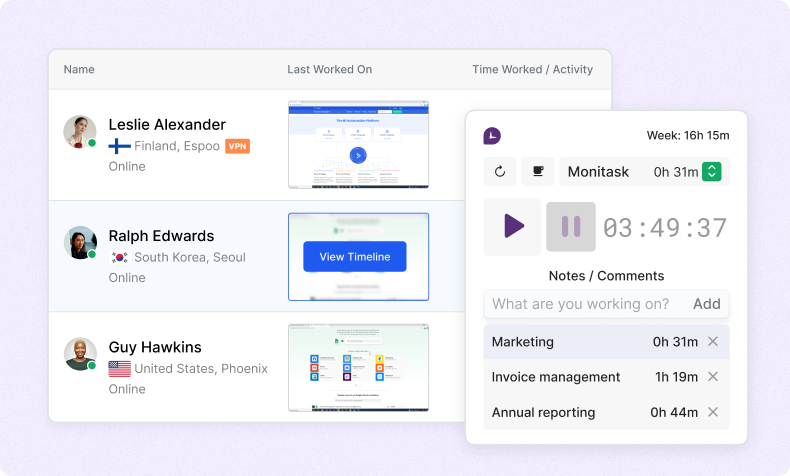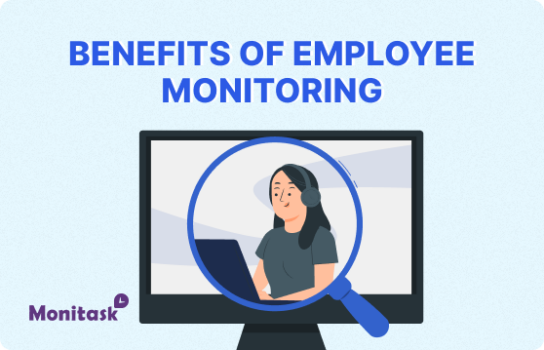How to Motivate Remote Employees: Strategies for Building Engagement and Productivity

Remote work has shifted from being a temporary solution to becoming a long-term reality for many businesses.
What started as an emergency response during the pandemic has evolved into a global trend that continues to reshape how organizations operate.
While remote work offers flexibility, cost savings, and access to a wider talent pool, it also brings new challenges—one of the biggest being how to keep remote employees motivated, engaged, and productive.
This article explores why remote employees need extra motivation, the pros and cons of remote work, and practical strategies you can implement to keep your distributed team inspired and performing at their best.
Why Remote Employees Need to Be Motivated?
When employees work in a physical office, motivation often comes naturally from in-person interactions, team energy, and shared spaces. Remote employees, however, miss out on those daily touchpoints. Without proactive motivation strategies, they risk feeling isolated, undervalued, or disconnected from the bigger picture.
Here are some reasons why motivation is crucial for remote teams:
- Lack of physical presence – Remote workers may feel invisible or overlooked compared to office employees.
- Blurred work-life boundaries – Working from home can make it harder to separate professional and personal life, leading to burnout.
- Reduced sense of belonging – Without regular face-to-face contact, employees may struggle to connect with the company culture.
- Autonomy challenges – While independence is a perk, some employees need more structure or feedback to stay focused.
A motivated remote team is not only more productive but also more loyal. Employees who feel valued and engaged are far less likely to disengage or seek opportunities elsewhere.
1. Foster Trust to Motivate Remote Employees
Remote employees thrive when they feel trusted to do their work without being micromanaged. Instead of obsessing over every hour worked, set clear expectations and measure performance based on results.
For example, using transparent tools like Monitask can provide visibility into workloads and project timelines without making employees feel watched. The focus should be on outcomes, not surveillance. When employees know they’re trusted, they’re more likely to stay motivated and take ownership of their responsibilities.

2. Provide Clear Communication and Feedback
Communication gaps can quickly lead to disengagement. Remote teams need structured communication practices—regular check-ins, clear updates, and open feedback channels.
Instead of only relying on emails, try weekly team video calls to keep everyone aligned. Pair that with quick one-on-one sessions where managers provide recognition, guidance, and constructive feedback. Employees feel valued when they know their contributions are being seen and heard.
3. Recognize and Celebrate Achievements
Remote workers can sometimes feel invisible compared to on-site staff. To counter this, create rituals of recognition. Celebrate milestones—whether it’s hitting project deadlines, landing a new client, or simply showing consistent effort.
Recognition doesn’t always need to be monetary. A public shout-out in a team call, a digital badge, or even a personal thank-you note can go a long way. These small gestures build morale and help employees feel they are an integral part of the company’s success.

4. Motivate Remote Employees by Respecting Work-Life Boundaries
Motivation can fade if employees feel burned out or pressured to be available 24/7. Remote leaders should encourage healthy boundaries. That means not expecting instant replies outside working hours and respecting personal time.
You can also lead by example—managers who refrain from sending late-night messages or acknowledge the need for balance set the tone for the whole team. A well-rested, balanced employee is a motivated one.
5. Keep Remote Employees Motivated with Growth Opportunities
Stagnation is a major demotivator. Offering opportunities for development shows employees that the company is invested in their long-term careers, not just their immediate output.
Provide access to online courses, skill-building workshops, or mentorship programs. Encourage employees to dedicate a few hours each month to learning something new. Growth opportunities make employees feel valued and excited about their future with the company.
6. Encourage Wellness and Mental Health
Remote employees often struggle with blurred lines between work and personal life, leading to stress or burnout. Companies that prioritize wellness see more motivated and engaged teams.
Encourage short breaks, movement during the day, and regular vacations. Consider wellness perks like meditation app subscriptions, online fitness classes, or virtual wellness challenges. Supporting mental health shows employees that you care about them as people, not just as workers.

7. Create a Sense of Belonging
One of the biggest challenges of remote work is the lack of social connection. Without casual office interactions, employees can feel isolated. To counter this, build intentional opportunities for bonding.
Host virtual coffee breaks, team-building games, or informal Slack channels where employees can share hobbies, music, or even pet pictures. These light interactions strengthen relationships and help employees feel part of a community, not just a workforce.
Maximize productivity of your business
Track employee productivity and simplify work with them
Conclusion: Motivating Remote Employees
Motivating remote employees requires more than just good management—it requires empathy, trust, and proactive effort.
By fostering open communication, recognizing achievements, investing in growth, and respecting boundaries, companies can create an environment where employees remain engaged and inspired.
In the end, motivated remote employees aren’t just more productive—they’re happier, more loyal, and more committed to the company’s success.
– The Monitask Team
FAQ: Driving Engagement in Remote Teams
What’s the biggest challenge of motivating remote employees?
The lack of daily in-person interaction often leads to feelings of isolation. Leaders must actively build communication and recognition practices to fill that gap.
How do you recognize remote employees effectively?
Public acknowledgment during meetings, digital awards, or private messages of appreciation can all boost morale. Small, consistent recognition matters more than occasional grand gestures.
Can professional development motivate remote workers?
Absolutely. Growth opportunities—like training, courses, or mentorship—show employees they’re valued and give them a reason to stay engaged.
How do you prevent burnout in remote teams?
Encourage breaks, respect working hours, and promote wellness practices. Managers who model balance inspire employees to do the same.



